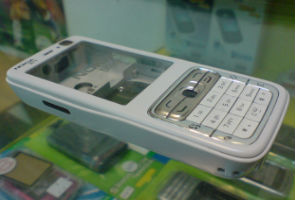 It's quite a challenge at times to make a phone call, it requires many steps. For instance, thinking of a person to call, finding their names on the cell phone or dialing their number and waiting for the call to connect. Too many steps, right?
It's quite a challenge at times to make a phone call, it requires many steps. For instance, thinking of a person to call, finding their names on the cell phone or dialing their number and waiting for the call to connect. Too many steps, right?At least some US researchers think so. They have now figured out a way that relies on thought power alone to make such calls without lifting a finger.
Users wear a specially designed headband hooked up to a Bluetooth device that wirelessly sends commands to a Nokia N73 mobile phone.
The technology works by responding to cues from the brain and experts believe anyone with training will be able to master the technique, the Daily Mail reports.
Tzyy-Ping Jung at the Swartz Centre for Computational Neuroscience at the University of California, San Diego, said the device relies on electroencephalogram (EEG) electrodes on the scalp to work out what the brain is trying to say.
Jung believes it could be 100 percent accurate with just a bit of training.
The breakthrough is likely to create safer hands-free mobile phones to help the disabled or elderly and help professionals in high pressure work environments.
The initial experiments of the device were between 70 percent and 85 percent accurate when trying to dial a 10-digit phone number.
Thought powered computers have been around for a while, however this is the first time it has been adapted for mobile phones.
No comments:
Post a Comment